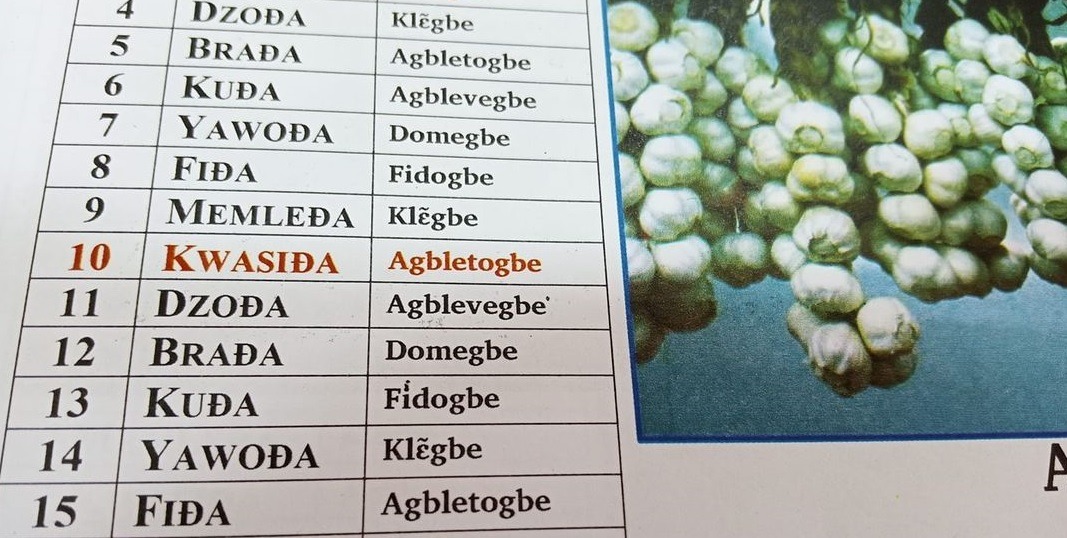The calendar designates a distribution of time adapted to the uses of life, it establishes a count of time, containing the order of the days, weeks and months of the year. The calendar varies according to people, time takes different forms, but the majority of them have one thing in common: they are defined in relation to the Sun or the Moon.
Today, the Gregorian calendar has established itself in the world, sometimes making people forget the existence of other calendars. But it is good to remember that each culture had its own way of dividing time!
Among the Ewe, a people of Togo and Ghana, the year is divided into 13 lunar months of 28 days each. As for the week, it is made up of 4 or 5 days. Among the Ewé people, who speak the Ewé language, the year is called “ƒe” (read pé), the month “Dzinu” or “ɣleti”, the week “Kwasiɖa” and the day “ŋkeke”.
Ewe calendar, produced by the Ewe Academy of Togo – Photo: Roger Mawulolo
The week with the Ewe
Among this people, the traditional division of the week is done into 4 or 5 days, it depends on the socio-economic activity (agriculture, market, fishing) which punctuates this division.
When the division is based solely on market days, it designates and encompasses 4 or 5 days. In Ewe, “market” is “asi”. For the 4-day week, it is divided and called as follows: asigbe (market day), asigbewo eve gbe (day after market day), atɔ̃gbe (the third day) and asinyagbe (market eve).
For the 5-day week, the days it includes are more varied: asitoegbe (start of the market), domegbe (day between market days), dzagbe (sacred day), aƒenɔegbe (day of rest) and asiamigbe (eve market day)
If we consider the division based on field work, there are generally 5 days. In Ewe, “field” is “agble”. These days are therefore defined and designated as follows: Klɛ̃gbe, Agbletogbe (first day of work), Agblevegbe (second day of work), Domegbe (day of rest) and Fidogbe (day of group work in the field of a member of the community).
The year and months among the Ewe
In the Ewé language, the calendar is said, ɣletigbalẽ (the document / book of moons or months).
The Ewe calendar has 13 months of 28 days. Their names : January, February, October, August, August, August, August, August, Spring, Summer and Autumn (read poavé).
For translation purposes, we correspond the first 12 months to those of the Gregorian calendar. So Dzove is January and December is Dzome.
The equivalents of the 7 days of the week in Ewé are: Dzoɖa (Monday), Braɖa or Blaɖa (Tuesday), Kuɖa (Wednesday), Yawoɖa Thursday), Fiɖa (Friday), Memleɖa (Saturday) and Kwasiɖa (Sunday).
Here is an overview of the Ewe tradition and language, a people of West Africa, which numbers more than 6 million individuals, living mainly in southeastern Ghana and southern Togo, where they are the majority .
